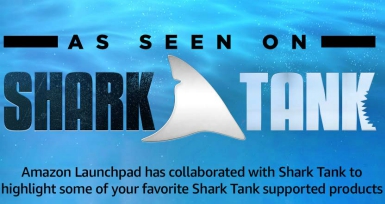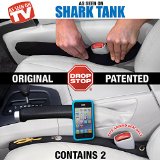Shark Tank is a TV phenomena that is growing in popularity and cultural impact. From the Sharks to the entrepreneurs, the visibility of the show is creating its own sub culture of fans and entrepreneurs. Social media has played a big part creating Shark Tank’s reach and “buzz factor,” whether the message comes from one of the Sharks, one of the entrepreneurs, or the media . Clearly, all folks involved with the show have some degree of social media presence, the question is, is it an effective social media presence?
A Harvard Business Review Study entitled The New Conversation: taking Social Media from talk to action finds that while 87% of businesses are using social media to promote products, brands, or services, only 12% of businesses are using social media “effectively.” 45% claim to be “getting there” and 43% are “ineffective” social media users. What this says to me is the value of using social media to engage customers is vastly under utilized.
I used to compare social media to the old concept of “institutional advertising.” Billboards, magazine ads, TV commercials, and the like are used to create brand awareness so when there is a call to action (ie: a product on a shelf). This type of advertising was/is used to en grain an awareness of a particular brand. I now know social media, while it certainly has an institutional advertising component, is much more than that. The businesses that “do social media” well create a conversation with their intended customers; unlike the one-sided nature of “old media” advertising, social media brings the customer into the fold.
Some of the Shark Tank sharks “do social media” well, others not so good. All the Sharks tweet regularly on show nights at #Sharktank and they will even engage fans as the show airs. The tweets fly fast and furious, so they obviously can’t reply to everyone. Lori Greiner told me that while she may not reply to every attempt at social media engagement, she is “paying attention.”
Mark Cuban has a big Twitter presence. His “tweet wars” with ESPN’s Bill Simmons and Shark Tank contestant Scott Jordan are amusing and Mr. Cuban is not shy about airing his feelings in 140 characters or less. Cuban has a personal Facebook page that over 750,000 have subscribed to, so he certainly has a following that most companies would kill for. Mark Cuban doesn’t necessarily “need” social media to advance his personal brand, but I am willing to bet when his various companies wish to engage in social media strategies, he has minions doing the grunt work for him. Billionaires like Cuban don’t strike me as the type of people who sit around posting to Pinterest all day.
Daymond John does social media well too. Daymond John’s Facebook Page is frequently updated, usually via Twitter. While Mark Cuban likes to sound off in his own voice on issues via social media, Daymond is more of a content curator; he tends to call attention to things he has an interest in or put up inspirational quotes on his page. His 14,000 “likes” pale in comparison to Cuban, but Daymond stays far more current with regular social posts.
Lori Greiner’s Facebook Page reveals a nice balance of branding products she’s involved with and personal stuff. There could be a post about NailPak next to a picture of what she had for dinner. This embodies the conversational approach that is tantamount to effective social media use. While getting her branding messages out, she still maintains a personable balance that keeps her fans engaged.
Barbara Corcoran does her social media similar to Lori. Barbara Corcorcan’s Facebook Page is littered with product promotions, business advice, and pictures of her grandchildren. She has a very humanizing element that women are drawn to (I don’t know one woman who doesn’t ADORE Barbara) and it shows in her posts. Like Daymond, Barbara tends to be more of a content curator than creator, but she strikes the right balance.
Kevin O’Leary’s Facebook Page reveals a jovial side to Mr. Wonderful. He doesn’t post as frequently as the aforementioned sharks, but he is out there. Mr. Wonderful doesn’t do as much branding on his Facebook page as the others- he has a lot of quirky posts about new clothes he’s purchased and wine he had with dinner, but there are promotional posts sprinkled in. His page seems to try to keep the Mr. Wonderful persona alive more than anything else.
Robert Herjavec is the most disjointed of all the regular sharks. There are no less than eight Facebook pages with his name attached! All of them don’t appear to be active, nor do they all appear to be “owned” by him, but none of them come close to the frequency of engagement that the other sharks demonstrate. Here is one of Robert Herjavec’s Facebook Pages; it seems to be “his page.” Posts are relatively few and far between.
Regardless of the frequency of sharks posts on Facebook or other social media, it would appear that all the Shark Tank sharks recognize the importance of some sort of social media presence and engagement. Their social media usage, while in some cases crosses into the promotional/marketing/branding landscape, doesn’t typify what a straight out branded social media presence for a small business looks like. The entrepreneurs who appear on Shark Tank face different challenges.
Gone are the days when so-called “conventional” advertising and marketing methods alone are enough, particularly in the consumer products arena. In The New Influencers: A Marketer’s Guide to the New Social Media (Books To Build Your Career By), author Paul Gillin states “Conventional marketing wisdom long held that a dissatisfied customer tells ten people. But…in the new age of social media, he or she has the tools to tell ten million.” This is a horrifying thought, but if you turn the quote around, a satisfied customer has the same power. I have been in sales since I was ten and I know when you have a product, the best way to sell it is to have people try it and tell their friends. Social media has accelerated that process and made it far more transparent than it was in the past.
I don’t want to dissect or critique each individual entrepreneur’s social media presence (or glaring lack thereof), but I will say there are a few entrepreneurs who have appeared on Shark Tank that do social media well. Kisstixx is a very good example of a business using social media effectively. There is even a “Shark Tank Entrepreneurs Facebook Page” (sorry- it’s private and invite only). The majority of Shark Tank entrepreneurs, like most businesses, are either “getting there” or “ineffective users.” To be fair, the explosion of web traffic that happens to just about every (compelling) business that appears on Shark Tank usually overwhelms the entrepreneurs through sheer volume. Some, like the Nardo’s Naturals boys, take the time to go through all their email and monitor their various social media outlets regularly, but there are four of them after all! Most others appear to scramble with social media to one degree or another.
Certainly the explosion of business is a temporary cause to letting the social media side of a Shark Tank entrepreneur’s marketing efforts slide, but it shouldn’t be a reason to abandon those efforts. Even though a bad social media presence is better than none at all, an effective social media strategy can really boost business. It’s a trap many entrepreneurs (not just those that appear on Shark Tank) can fall into. Business owners often find they are too busy working in their business and not on their business. Social media marketing, which is CHEAP when compared to just about any other form of marketing, is often something that entrepreneurs let slide in the rush following a Shark Tank appearance.
Entrepreneurs who appear on Shark Tank have a unique window of opportunity: funded or not, they get a four-minute commercial for their business on national TV. If Shark Tank is indeed the American Idol of Venture Capital, then the entrepreneurs need to be ready to capitalize on their exposure. I have written repeatedly on this site about the need for a robust web presence in the aftermath of a Shark Tank appearance, but an entrepreneur’s web strategy needs to go “beyond the shopping cart.” Social media needs to be part of the post Shark Tank plan as well.
The key for any small business person to utilize the power of social media is to have a clear-cut strategy and then continuous execution. If an entrepreneur falls into the “getting there” or “ineffective” categories when it comes to social media, there are resources to turn to. If time is just too dear, perhaps outsourcing social media functions is a good idea. It is relatively inexpensive when compared to conventional advertising/marketing or an online advertising campaign. If it’s a lack of understanding how to be an effective social media user, maybe having someone set things up and provide some training is the way to go. Perhaps a mix of the two is a good fit.
Regardless of whether social media as a marketing tool is here to stay or a passing fad, it is here NOW and the scope is widening every day. To ignore the power of social media marketing in building a brand is like driving a car with a nearly empty fuel tank: you’ll go somewhere, just not as far as you could.









Speak Your Mind